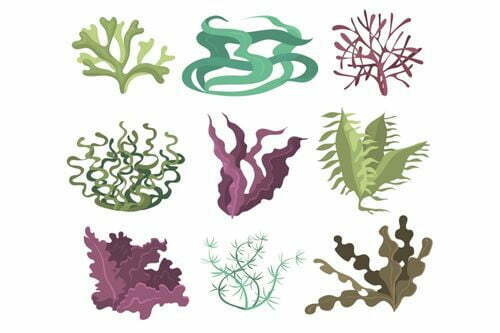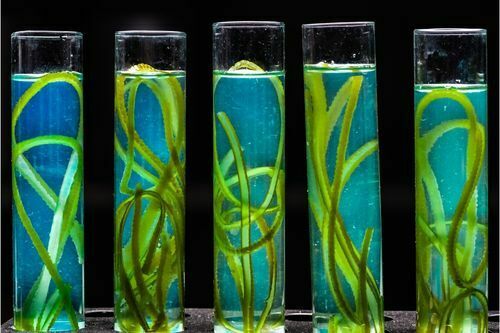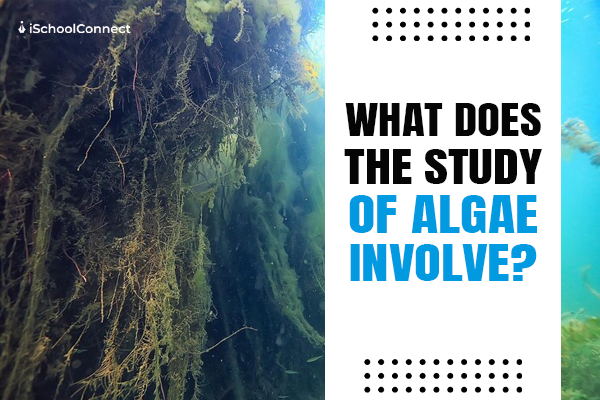Table of Contents
A wide variety of aquatic organisms called algae are able to synthesize oxygen through photosynthesis. Although officially not considered to be either plants, animals, or fungi, algae are sometimes referred to as plants due to the presence of chloroplasts and the process of photosynthesis. The other conventional characteristics of plants, such as stems, leaves, and roots, are absent in algae. Diatoms or algae are typically single-celled organisms, though there are multicellular variations as well, such as kelp and various seaweeds.
What is the algae?
Algae are a diverse collection of mostly aquatic plants that range in size from tiny forms to species as large as shrubs or trees. Phycology, sometimes known as algology, is the study of algae. Due to the significance of algae in ecology, people are immediately interested in the study of algae.
Algae is an extremely basic plant, you can find it everywhere. Algae was one of the earliest plant species to develop the ability to use its green chlorophyll to convert carbon dioxide and water into food with the help of solar energy. Algae are predominantly aquatic plants and don’t have the upright architecture of terrestrial plants. They frequently float on or near the surface of the water they inhabit.
Algae are such a significant component of many ecosystems, that phycology, or algology, is extremely important to biology. Algae are key species as well as a primary producer, and many organisms depend on them as a food supply.
Types of algae

Green algae
The most prevalent type of algae in swimming pools is green algae. They can grow from spores to completely turning a pool green in a couple of days if the appropriate conditions are available for their growth. Although it can also grow inside pipes and on pool decks, green algae often grow on the surfaces of swimming pools. Algae blooms will eventually float and take control of a pool. If given the correct ingredients, green algae can reproduce as frequently as every 3-6 hours. Green algae are also mostly used in research for the study of algae.
Yellow algae
The type of algae that is more chlorine-resistant and has a tendency to bloom in the shade is known as yellow algae (mustard algae). Green algae like sunshine to thrive, but mustard algae prefer dark walls and corners. They produce a film of yellowish-green slime that is very simple to brush off. While mustard algae are more easily removed than green algae, they are more difficult to eradicate. With the correct nutrients, both types can survive.
Black algae (blue-green-algae)
Cyanobacteria, or blue-green or black algae, are different types of algae. In the pool industry, they are still regarded as a particular kind of algae. Although these species are not as frequent as green or mustard algae, if you see them in your swimming pool, beware—they are famous for being difficult to remove. Chlorine must be able to penetrate the protective layer formed by black algae to properly kill it. Although brushing is still necessary to remove it, enzymes can aid in softening this protective layer.
Pink algae (Pink Slime)
It looks like algae, but it is actually bacteria. Because of how it behaves, it is simply called algae. Pink algae prefer PVC surfaces with little or no sunshine. The only thing we do know about pink algae is that it needs to be addressed seriously. It needs to be removed immediately if you see pink slime grow in a pool.
White water mold
It is not a type of algae, despite what many people believe when they see it. White water mold typically develops in plumbing pipes and filters before manifesting as floating sheets of white tissue paper or ugly clusters resembling mucus.
Characteristics of algae

The characteristics of algae are an important part of the study of algae. Specific general characteristics of algae are common to plants as well as animals. Algal cells are eukaryotic. For example, algae can photosynthesize like plants, and they have specialized structures and cell organelles, like centrioles and flagella, which are found only in animals. The algal cell walls consist of mannans, cellulose, and galatians which are found in plants.
Listed below are some of the general characteristics of algae
- Algae are photosynthetic organisms.
- Algae can be either unicellular or multicellular organisms.
- Algae lack a well-defined body, so structures like roots, stems, or leaves are absent.
- Algae are found where there is adequate moisture.
- Reproduction in algae occurs in both asexual and sexual forms. Asexual reproduction occurs by spore formation.
- Algae are free-living, although some can form a symbiotic relationship with other organisms.
Key takeaways
- Algae is a fairly simple plant that can be found almost anywhere. Algae was one of the first plant species to gain the ability to use solar energy to convert carbon dioxide and water into food via its green chlorophyll.
- There is a number of varieties of algae. Green algae, pink algae, and black algae are just a few examples. Green algae are the most common and can be found practically anywhere. Some algae are toxic, while others are not.
- Algae can photosynthesize like plants and have specific structures and cell organelles found only in animals, such as centrioles and flagella. Mannans, cellulose, and galatians, which are found in plant cells, make up the algal cell walls.
Did you find this blog informative? If so, please share your thoughts in the comments section below. Click here to contact us for more information on the study of algae. We would be happy to assist you with your queries.
Liked this blog? Read next: Top 4 science experiments of all times
FAQ
Q1. Which are the largest algae?
Ans-The largest type of algae, giant bladder kelp (M. pyrifera), may grow to a length of 65 meters (215 feet), and it is believed to have the highest rate of linear growth of any living thing on Earth.
Q2. Are algae harmful to humans?
Ans-Blue-green algae vary in their ability to produce toxins. However, when water with blooms is touched, ingested, or any type of exposure to any blue-green algal blooms can have negative health impacts on humans and animals.
Q3. Are algae bacteria or a plant?
Ans- Algae are sometimes categorized as plants and other times as ‘protists,’ which is a catch-all term for a group of essentially unrelated organisms that are lumped together because they are not animals, plants, fungi, bacteria, or archaeans.







